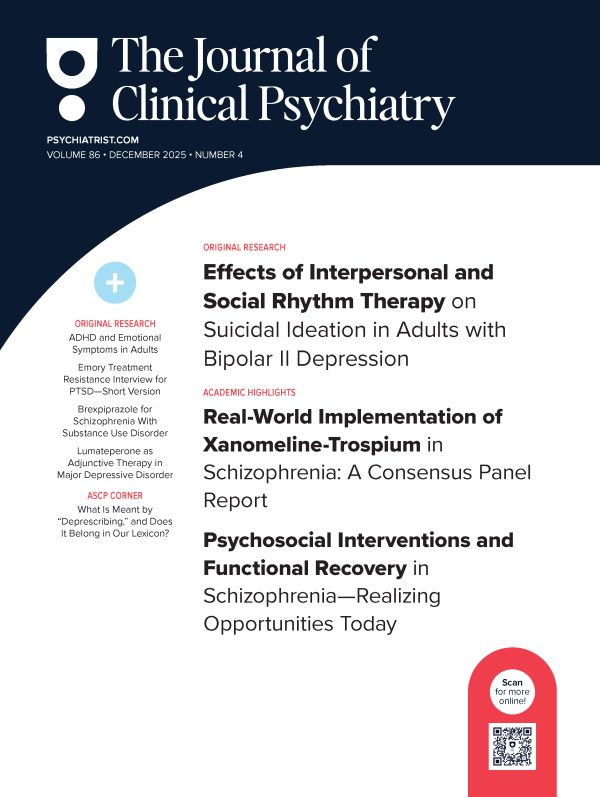Objective: Follow-up studies of patients with depressive disorders have identified only a few replicable predictors of suicide and have not explored possible interactions between them. The following analysis takes advantage of a large cohort of depressed patients given detailed, structured interviews 2 decades ago.
Method: The data set on which this analysisis based was collected between 1976 and 1990. Research personnel administered the Schedule for Affective Disorders and Schizophrenia to 785 adults who had major depressive disorder (Research Diagnostic Criteria) but who lacked other Axis I disorders. The current analysis used the National Death Index to determine mortality status as of 2003.
Results: One in 4 of the 134 deaths were by suicide for an overall suicide rate of 4.2%. In comparison to the remaining 752 patients, the 33 who died by suicide were more likely to have been inpatients and to have had a history of suicide attempts at the time of baseline assessment. They had also expressed more hopelessness and had higher ratings of suicidal tendency. The last of these variables was the most robust by far and, when tested with other predictors in regression analyses, was the only one to retain significance (p < .0001). No interactions between predictors emerged. As in an earlier, similar study, the suicidal tendency rating was predictive of suicides that occurred after the first year of follow-up, which suggests that suicidal tendencies comprise a trait that persists across episodes.
Conclusion: A global rating of suicidality appears to be the single most important predictor of eventual suicide in patients with major depressive disorder.
Please sign in or purchase this PDF for $40.00.





